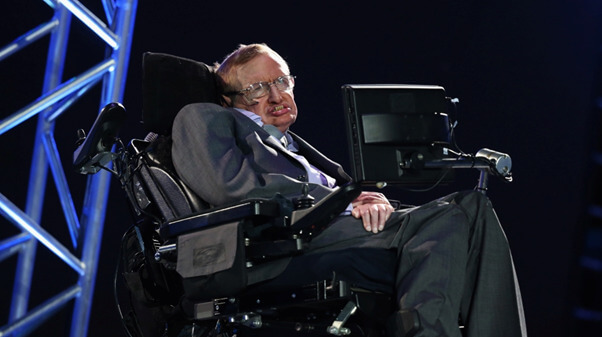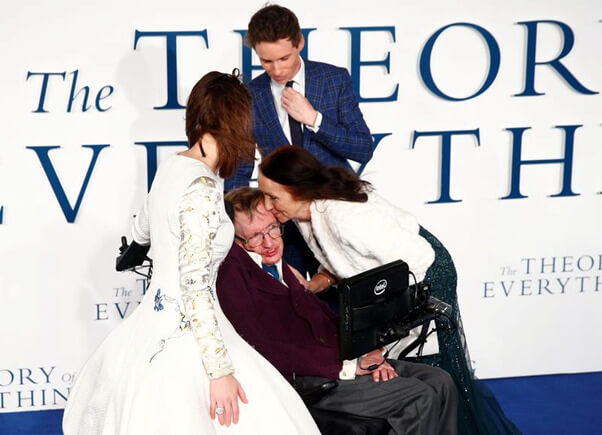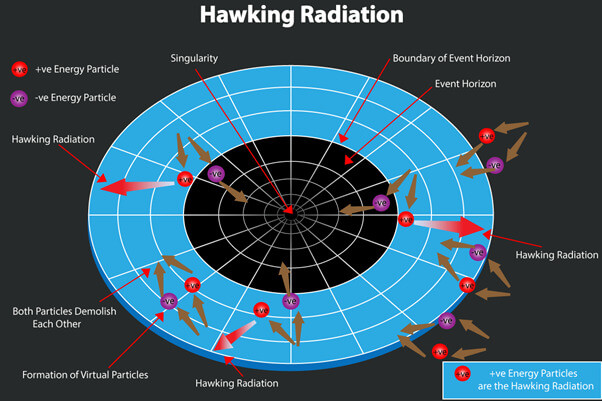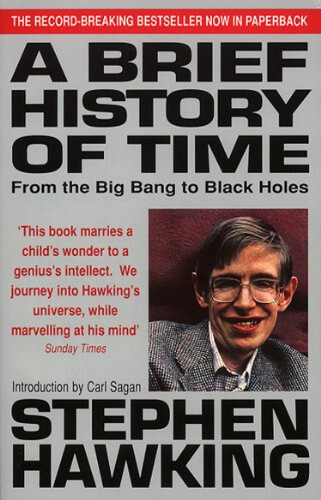1.Biography of Stephen Hawking
Stephen Hawking's full name is Stephen William Hawking. He was born on January 8 in Oxford, England, exactly 300 years after the father of modern science, Galileo Galilei, died. His father, Frank, is a medical researcher, and his mother, Isobel Eileen, is a secretary for a medical research institute. Hawking's father had a wish that he would follow his path of medical research. However, during his college years, he showed an interest in biology and did not have much chemistry for science or medicine. He felt it was inaccurate and easy to fall into descriptions like other fields.

This genius theoretical physicist has an IQ of 160.
Therefore, Hawking concentrated all his spirit and amazing IQ on the more relevant field, physics. With this intellectually demanding major, Stephen Hawking's IQ is a perfect factor to meet that requirement. At that time, his field of astrophysics was not really recognized. So, after receiving an excellent diploma from Oxford, he moved to Cambridge University to continue pursuing his doctoral thesis in cosmology towards success.
Hawking was born a genius. He is also one of the 10 people with the highest IQ of all time up to 160 points. With an impressively high IQ, this genius British physicist has dedicated his life to solving the mysteries of the universe for mankind. For this reason, he is considered “the brightest star in modern cosmology”.
2.What is the IQ of Stephen Hawking?
Stephen Hawking was born into an environment where education came first. His parents were both low-income but still tried their best to be able to study at the prestigious Oxford University. Obviously, his family members were all highly educated people. This also easily explains his extremely high IQ, which is 160, on par with the genius of physics, Albert Einstein. Also, based on Stephen Hawking’s IQ, his father hoped he would go to Oxford. However, his poor performance in school as a child made this seem impossible. He neither achieved a scholarship nor got high grades compared to his peers.

He was only 17 to major in Physics and Biology because there was no major in Mathematics here.
His academic results were in stark contrast to his IQ and that continued with the next level of education. The problem was not with Hawking's IQ but with his tardiness. Hawking has always been interested and passionate about the operation of tools. Therefore, he often tinkered with disassembling radios, watches, etc., to study the small components inside. However, the most interesting thing is that after taking them apart, he was not as good at putting the parts back together as they were in their original state, even though he has a very high IQ.
Although his grades were a hindrance, his teachers and friends all recognized his genius qualities. A math teacher at St. Alban discovered Hawking's natural talent in the field of mathematics and advised him to pursue this field in college. In 1959, Hawking entered Oxford University when he was only 17 to major in Physics and Biology because there was no major in Mathematics here. Once again, people question who Stephen Hawking is because he is also known by the nickname “Einstein”. He eventually became an Oxford student with excellent scores on his physics test.
However, 18 months later, he found it extremely lonely and boring to study, because most of the students were older than him and he found studying oddly easy. He has estimated that he spent just 1,000 hours studying during his three years at Oxford, which is less than an hour a day. This made it difficult for him to complete tests with high scores because Hawking could only answer theoretical questions, but could not complete the practical parts.
A change occurred in the second and third years as Hawking tried to become more integrated with his peers. He strives to become a well-liked, vivacious, witty student with an interest in classical music and fiction. After that, things gradually took a turn for the better when Hawking joined the school's rowing team and became more outgoing. It was his first time participating in sports before he was diagnosed with amyotrophic lateral sclerosis. So with a first-class bachelor's degree at Oxford, Hawking began studying for a master's degree at Cambridge University in October 1962.
3.The big turning point in Stephen Hawking’s life
Hawking began his studies in October 1962 at Trinity Hall, Cambridge. It was during his time at Oxford that his life changed forever. Hawking began to feel that he was becoming inexplicably clumsy. He had trouble rowing when he joined the school club and even fell down some stairs. Symptoms gradually got worse. His family noticed signs of a lisp. Then, medical investigations began, and Hawking was eventually diagnosed with ALS, an illness that haunted him for the rest of his life, at the age of 21. His limbs gradually became paralyzed and shrunken, and then he lost the ability to move. He was expected to have only two years to live.
That diagnosis and the shortened life expectancy sent Hawking into a state of depression and despair. He even stopped studying at the university because he felt there was no use. One of his supervisors, Dennis William Sciama, encouraged him to change his mind.
After returning to his studies, Hawking gained a resoundingly strong reputation. Unfortunately, in the late 1960s, Hawking's physical abilities began to decline. He could no longer walk without crutches and his speech gradually deteriorated. In the late 1960s, Hawking was finally persuaded to start using a wheelchair, despite his initial vehement opposition. He is known as a reckless wheelchair driver. More than anyone, Hawking understands his illness. He also once said about the end of life: “I'm not afraid of death, but I'm in no hurry to die, I have so much I want to do first” (2011).
In 1985, after a severe episode of pneumonia, Hawking had to undergo a tracheostomy, leaving him permanently unable to speak. In 1986, he received a computer program called “Equalizer”, developed by the CEO of Words Plus, Walter Woltosz. Initially, the program was installed on a desktop computer and eventually transferred to a small computer built to fit his wheelchair.

Stephen Hawking was diagnosed with amyotrophic lateral sclerosis.
Whenever Hawking gives a lecture or arranges a speech, the script is sent to the computer and prepared into short pieces for performance. Unfortunately, Hawking continued to lose function in his hand in 2005 and could no longer use the controls for his computer. Therefore, he had to use his cheek muscles to communicate with the computer. But that slowed his process down to about one word a minute.
It was at this point, however, that his relationship with his first wife, Jane Wilde, took a huge step forward as they became engaged in October 1964. As Hawking once said, this milestone gave him something to live for. After 25 years of living with Wilde and having 3 children, the two divorced in 1995 because he developed feelings for his nurse, Elaine Mason.
Though, the marriage to Hawking's second wife did not last long. In 2006, he became close again with his first wife and children after divorcing his second wife. In 2014, the two happily paired up to attend the premiere of the movie "The Theory of Everything", based on the life story of the resilient genius with an IQ of 160.

The movie "The Theory of Everything", based on the life story of the resilient genius with an IQ of 160.
55 years have passed since the day he was diagnosed with a strange disease, the great scientist did not die. However, he is entirely dependent on a wheelchair and makes eye contact, especially through a speech synthesizer. At the age of 65, he took part in a zero-gravity flight, even though he knew it was very risky. In early 2018, Hawking died at the age of 76 and became the longest-living ALS patient ever.
4.The great works of Stephen Hawking
Illness did not stop Hawking from progressing on his research path. He left a huge legacy with works on cosmology and theoretical physics, such as Hawking radiation and black holes. In addition, he graduated with a doctorate and won the Adams Prize with an essay on the entire universe based on the difference in time and space. The most prominent is the collaboration with Roger Penrose on the theory of gravitational singularity within the framework of general relativity and the theoretical prediction of black holes emitting radiation (i.e. Hawking radiation). Hawking was the first to initiate a cosmology based on the unification of general relativity and quantum mechanics. He was also a strong proponent of the many-worlds interpretation of quantum mechanics.

Hawking radiation and black holes.
Hawking may not have been the greatest physicist of his day, but in astronomy, he is an unbreakable monument. His Albert Einstein Prize, Wolf, Copley Medal, and Prize in Fundamental Physics have proved to some extent that few can compare with his contributions to science.
In 1966, the king of physics won the Adams Prize for his essay on singularities and the geometry of time and space. This is an extremely difficult thesis, requiring a high IQ to complete but he did it. In 1968, he moved to the Institute of Astronomy, after which he moved back to DAMTP as a research and publishing assistant for his first book with George Ellis on the large-scale structure of spacetime. He stated that: “My goal is simple. It is a complete understanding of the universe, why it is as it is and why it exists at all” (1984).
In 1988, Hawking published his most famous work, A Brief History of Time: From Big Bang To Black Holes. This masterpiece has sold 10 million copies, translated into 40 different languages, and was in the Guinness Book of Records for consecutively topping the list of Best Sellers for 237 weeks, as voted by the Sunday Times.

Stephen Hawking published his most famous work, A Brief History of Time: From Big Bang To Black Holes.
Hawking's first major and groundbreaking contribution was published in 1970 when he and Roger Penrose jointly published research on the mathematical link between black holes and the universe as a whole. This work has shown that a special region that bends spacetime around it appeared in the past – the time of the Big Bang.
In the following years, Hawking was elected a Fellow of the Royal Society, distinguished scholar Sherman Fairchild at the California Institute of Technology, lecturer in gravitational physics at DAMTP, Professor of Vapor Physics, and finally, the Lucasian Professor of Mathematics from 1979 to 2009.
In 2012, scientists gathered in Cambridge to celebrate Hawking's 70th birthday, a milestone few thought Hawking could reach. However, he was unable to attend due to his serious condition. But illness never stopped Hawking. In A Brief History of Mine, he stated the spread into space was for the future of humanity. And if we do not reach out to the universe, humanity will not be able to “survive the next thousand years” (2011).
Although he passed away in 2018, his passion for science will never be forgotten. This 160 IQ physics genius also had a great influence on the scientific community, as well as the disabled community, whom he showed that even with some setbacks, nothing can stop a person from changing the world if he is dedicated enough. The miracle of optimism and love of life has helped Hawking continue to promote his inherent IQ to continue to make a career and many valuable contributions to world science.
< << See more >>> Isaac Newton IQ 190.
Có thể bạn quan tâm